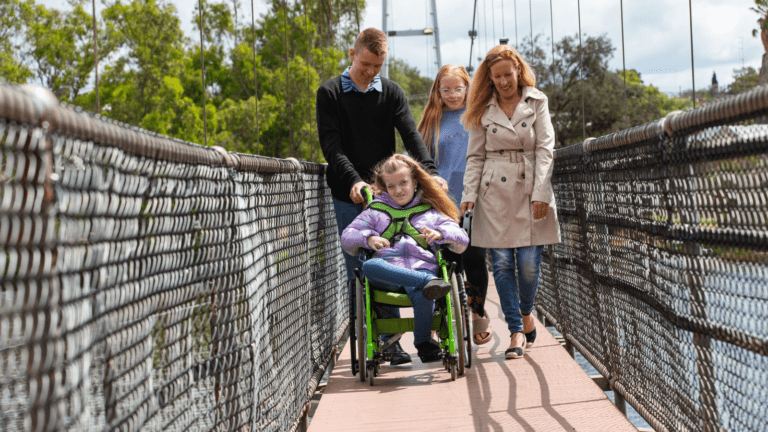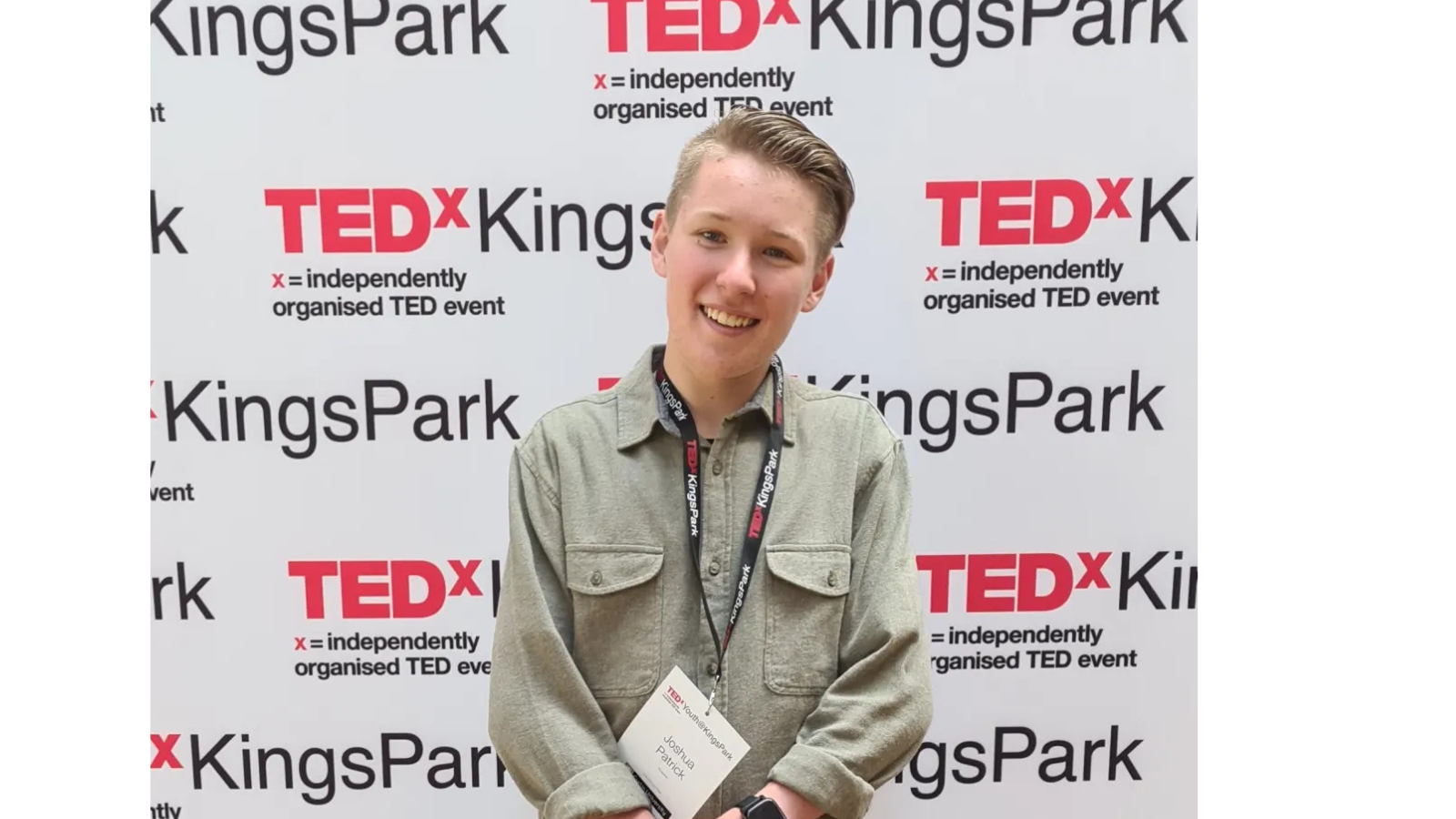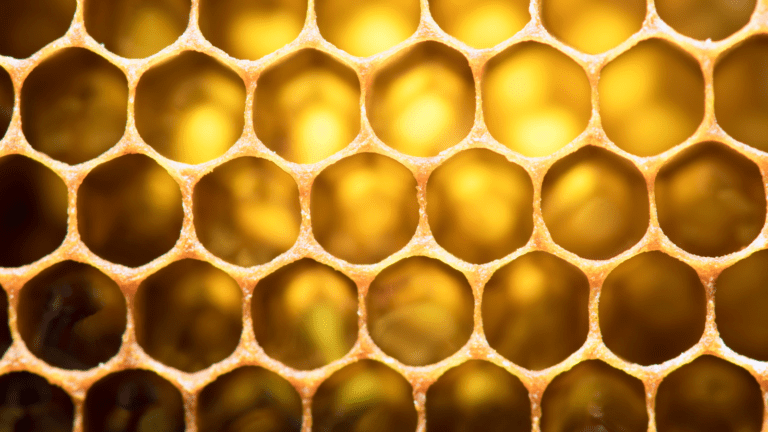What’s in a Name?

It was a day our family had been eagerly awaiting for over 10 years—the day we received a diagnosis for my sister, Charlotte!
Following a decade of managing confronting medical issues, day and night, with no idea as to why they were occurring, we learned the genetic explanation for Charlotte’s physical anomalies, myriads of health issues and intellectual disability. She has a deviation on the MED 12 gene!
This genetic condition, so rare that it has no name, affects only four people globally. That’s one in two billion! All the patients are girls—including Charlotte.
My childhood has been largely dominated by Charlotte’s bewildering and ever-changing health and disability treatments, and her home care requirements. It has been a steep learning curve for me—crushing and administering medications into Charlotte’s PEG, washing and changing her, setting up her feeds through a feeding pump, inserting naso-gastric tubes, needling Charlotte’s port and managing her seizures by suctioning secretions and administering oxygen with a bag and mask.

This young carer role at home, and the frequent, lengthy stays in hospital, over an hour away, has punctuated my young life and shaped my perspective significantly.
As you can imagine, this unpredictable and demanding lifestyle was exceptionally challenging, and placed each member of my family, myself included, under extreme stress, and often for prolonged periods of time.
Many traumatic events occurred during hospital admissions that would greatly affect me for many weeks and months—kissing Charlotte goodbye in ICU when she was not expected to pull through, seeing her almost bleed out following a mishap during a routine surgery, or watching her plead with me with her eyes to make the pain and suffering stop. These sorts of heart-wrenching experiences leave an indelible mark on one’s soul.
Our tumultuous journey was even more frightening as we never had any idea of the overarching cause of Charlotte’s complex health issues and her ever-increasing list of symptoms. We didn’t know what the future held for Charlotte and for our family.
A flood of emotions has hit me since learning of Charlotte’s extremely rare (1 in 500,000,000) diagnosis, affectionately described during a conversation with the geneticist as ‘Charlotte’s Syndrome’. I am encouraged by the prospect of a potential community providing us with somewhat of a prognosis and roadmap for Charlotte. I am excited by the opportunity to help write the book on this rare gene mutation for the ‘Charlottes of the future’, and I have a sense of relief that this condition cannot be passed onto future generations.
This news has instilled in me a sense of hope. As gene-level skills, knowledge and technology become ever more advanced, the identification of Charlotte’s extremely rare diagnosis offers hope to all the other individuals and families still waiting for their diagnosis, so many of whom are in my network.

After 10 years, we had almost lost hope of finding the genetic cause of Charlotte’s multiple physical anomalies and disabilities. Nevertheless, we eventually received that phone call and heard the words we’d waited so long to hear: “We’ve learned Charlotte’s diagnosis!”
I am optimistic that these rare, ‘needle in a haystack’ discoveries are going to become more frequent and revelations like ours, more common.
I guess all these emotions are fairly predictable, and what I had expected to experience. What I NEVER anticipated feeling was confusion, grief and fear. What might I learn about the prognosis for Charlotte from this new-found community who are dealing with the same genetic variant? What does this long string of letters and numbers actually mean?
I also feel a strange sense of loss as our undiagnosed disease journey has officially come to an end. Our support of the ‘gift of giving’ which at the 2020 Telethon Ball raised money for the Undiagnosed Diseases Program, was my stepping stone into advocacy and support for young carers. My involvement with the organisation, Syndromes Without A Name (SWAN), has shifted; we now have somewhat of a name, or a genetic explanation, and are no longer classified as ‘undiagnosed’.
We have now ‘graduated’ from the Undiagnosed Diseases Program to a large, scary world full of unknown facts, life chances and future predictions.
Perhaps our conversations and research will provide us with hope and optimism. From the relatively brief conversation we had with the geneticist though, individuals with the same MED 12 gene deviation seem to be severely affected and experience multiple comorbidities and a rather grim prognosis.
So, I am left wondering, am I glad to finally have a label or a genetic explanation for Charlotte’s medical battles? Will this rather grim diagnosis impact or assist our Charlotte’s medical care or treatment?
Please don’t get me wrong—I am incredibly grateful for all of the hours of work, countless lengthy genetics appointments, research, international genetic network meetings, and painstaking work invested by a team of geneticists, researchers and laboratory technicians. However, the news has shaken me.
Each family member seems to be in a state of shock, not knowing quite how to feel at the news. Do we go out for dinner to celebrate? It didn’t seem quite right. Alternatively, do we close ranks, snuggle up together and hide as we do when we have received some life-altering news that we need to process?
Perhaps my overwhelmed, shocked reaction, as with every other scary medical development or new medical issue we have encountered, will gradually fade with the passing of time and this too will become our new normal.

One thing this news has highlighted for me is that siblings (young carers) and families of children with undiagnosed or extremely rare diseases have very unique needs and are offered little support. I am ashamed to admit that I have so often met families of children diagnosed with rare diseases and have thought, ‘At least they have an answer and some idea of what they’re dealing with’. So many families in our network who manage common or well-known diagnoses have strong, well-funded and proactive organisations that offer immense support and assistance during hospital admissions, as well as facilitating social events within local communities for both young and adult family members/carers.
I am so exceptionally grateful and proud of the work of Syndromes Without A Name (SWAN), as well as the sibling offshoot of this organisation—SWAN Siblings, that I founded over two years ago. The needs of this rare and diverse demographic are so intensely unique and specialised.
There are some families who are still searching for the genetic needle in the haystack. Others, like us, are grappling with a new-found diagnosis and a daunting new, obscure identity. For all these families, navigating the journey is a confusing and frightening battleground that requires guidance from seasoned and informed soldiers!
Glimmer is committed to sharing the stories of individuals, like Josh, who tirelessly work to support and advocate for vulnerable people and communities, striving to create a more equitable world.
Join Glimmer, the safe and secure online community, committed to promoting wellbeing and a sustainable world, encouraging each other in a positive and inclusive space.
Interested in other stories on sustainability and well-being? See these Glimmer articles.
- About the Author
- Latest Posts
Joshua is a 16-year-old, year 11 student from the regional Wheatbelt town of Northam. Josh has been a young carer for his sister, Charlotte, for over 10 years, providing intense, nursing-level care for her around the clock.
Josh’s life and outlook has been significantly shaped by his caring role, as well as poverty and multiple other intersectional circumstances of disadvantage he has experienced throughout his childhood, most recently the devastating house fire his family experienced in July 2023.
Joshua’s unique voice and the resilience, integrity and passion he demonstrates by not only thriving in all areas of his life, but also through using his personal experiences of hardship to tackle youth disadvantage have been shared in a TEDx talk he presented at just 14; at youth and Department of Education conferences; in Carers WA youth advisory group meetings; during the monthly online national SWAN sibling support group meetings he facilitates; and on Department of Communities and other media and organisational resources.
Early in 2024, Joshua made his first of many trips to Canberra to participate in the National Youth Summit and Australia-wide ‘Civic Engagement Youth Advisory Group’. During these trips, Josh and the other state and territory representatives propose initiatives, using their diverse lived experiences to maximise youth civic engagement with the relevant ministers.
Josh has aspirations of becoming a doctor, biomedical engineer or politician (ideally in Health). It is exciting to contemplate the immense possibilities that lay ahead for Joshua.







